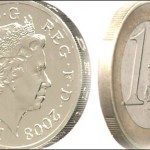Yesterday’s trade saw USD/BRL within the range of 2.2462-2.2639. The pair closed at 2.2623, gaining 0.69% on a daily basis.
At 11:35 GMT today USD/BRL was down 0.01% for the day to trade at 2.2620, which is also the current daily low.
Fundamental view
United States
The Jackson Hole Economic Policy Symposium is to be held today. Sponsored by the Federal Reserve Bank of Kansas City since 1978, the forum is attended by central bankers, policy experts, academics and financial market investors, who discuss a number of economic topics, including monetary policies.
Initial and Continuing Jobless Claims
The number of people in the United States, who filed for unemployment assistance for the first time during the week ended on August 15th, probably dropped to 300 000 from 311 000 in the prior week. This is a short-term indicator, reflecting lay-offs in the country. In case the number of initial jobless claims decreased more than projected, this would have a bullish effect on the greenback. The Department of Labor is to release the weekly report at 12:30 GMT.
The number of continuing jobless claims probably dropped to the seasonally adjusted 2 518 000 during the week ended on August 8th, from 2 544 000 in the previous week. This indicator represents the actual number of people unemployed and currently receiving unemployment benefits, who filed for unemployment assistance at least two weeks ago.
Manufacturing PMI by Markit
Manufacturing activity in the United States probably remained almost unchanged in August, with the corresponding preliminary Purchasing Managers Index coming in at a reading of 55.7. In July the PMI stood at 55.8. Values above the key level of 50.0 indicate optimism (expanding activity). Higher PMI readings would support the national currency. The preliminary data by Markit Economics is due out at 13:45 GMT.
Existing Home Sales
The index of existing home sales in the United States probably dropped 0.4% to a level of 5.01 million in July compared to June. In June compared to May existing home sales rose 2.6% to 5.04 million. The sample of data encompasses condos, co-ops and single-family houses.
Statistical data on existing home sales is often used along with statistical figures regarding the new home sales and pending home sales, with the major objective being to draw a conclusion how nation’s housing sector is performing, regardless of interest rates. The most active house-purchasing period in the United States is usually between the months of March through June. Therefore, in case statistical data revealed a sudden drop in the number of homes sold rather than an improvement during this period, this would be considered as a signal of weakness in country’s housing market.
The report on existing home sales usually does not cause a real direct impact on US economy. Actually, this effect appears to be minimal, due to the fact that nothing is produced with the mere sale of an existing home. In terms of economic activity, the sale of an existing house may be related only to interior design and purchases of new furniture.
The reason markets pay a certain attention to existing home sales report is that it reveals much about the general course of nation’s economy. A major part of the population considers a house as a sign of wealth and, unlike the money wealth, which is concentrated in certain regions of the country and held by the wealthiest representatives of the population, ”housing wealth” is evenly distributed across the country.
In case the index decreased more than anticipated, this would have a bearish effect on the US dollar. The National Association of Realtors (NAR) is to release the official figure at 14:00 GMT.
Philadelphia Fed Manufacturing Survey
The Philadelphia FED Manufacturing Index probably fell to 20.3 in July from 23.9 in the previous month. The index is based on a monthly business survey, measuring manufacturing activity in the third district of the Federal Reserve, Philadelphia. Participants give their opinion about the direction of business changes in overall economy and different indicators of activity in their companies, such as employment, working hours, new and existing orders, deliveries, inventories, delivery time, price etc. The survey is conducted every month since May 1968. The results are presented as the difference between the percentages of positive and negative projections. A level above zero is indicative of improving conditions, while a level below zero is indicative of worsening conditions. The Federal Reserve Bank of Philadelphia is expected to release the official results from the survey at 14:00 GMT. Higher-than-expected index readings would certainly heighten the appeal of the greenback.
Brazil
The rate of unemployment in Brazil probably climbed to 5.1% during May, according to the median forecast by experts. In April the rate was 4.9%, as the number of unemployed people dropped 17% compared with a year ago to reach 1.2 million people. In March the rate of unemployment stood at 5.0%. It represents the percentage of the eligible work force that is unemployed, but is actively seeking employment in six Metropolitan Areas – Recife, Salvador, Belo Horizonte, Rio de Janeiro, São Paulo and Porto Alegre. The rate of unemployment also reflects overall economic state in the country, as there is a strong correlation between consumer spending levels and labor market conditions. High rates of unemployment are accompanied by weaker spending, which causes an adverse effect on corporate profits and also leads to overall growth deceleration. Therefore, in case the rate of unemployment rose more than expected, this would have a negative effect on the local currency. Instituto Brasileiro de Geografia e Estatística (IBGE) is to announce the official rate at 12:00 GMT.
Technical view
According to Binary Tribune’s daily analysis, the central pivot point for the pair is at 2.2575. In case USD/BRL manages to breach the first resistance level at 2.2687, it will probably continue up to test 2.2752. In case the second key resistance is broken, the pair will probably attempt to advance to 2.2864.
If USD/BRL manages to breach the first key support at 2.2510, it will probably continue to slide and test 2.2398. With this second key support broken, the movement to the downside will probably continue to 2.2333.
The mid-Pivot levels for today are as follows: M1 – 2.2366, M2 – 2.2454, M3 – 2.2543, M4 – 2.2631, M5 – 2.2720, M6 – 2.2808.
In weekly terms, the central pivot point is at 2.2673. The three key resistance levels are as follows: R1 – 2.2785, R2 – 2.2973, R3 – 2.3085. The three key support levels are: S1 – 2.2485, S2 – 2.2373, S3 – 2.2185.





